Capsicum assamicum
The ghost pepper, bhut jolokia, was the first hot pepper to be measured at over 1 million Scoville heat units.
In 2007 it was listed in the Guinness Book of World Records as the “hottest pepper in the world” – but it has since been knocked off its podium by the sinister-sounding ‘Carolina Reaper.’
The “heat” of a pepper is measured in Scoville heat units (SHU), which measures the concentration of capsaicin.
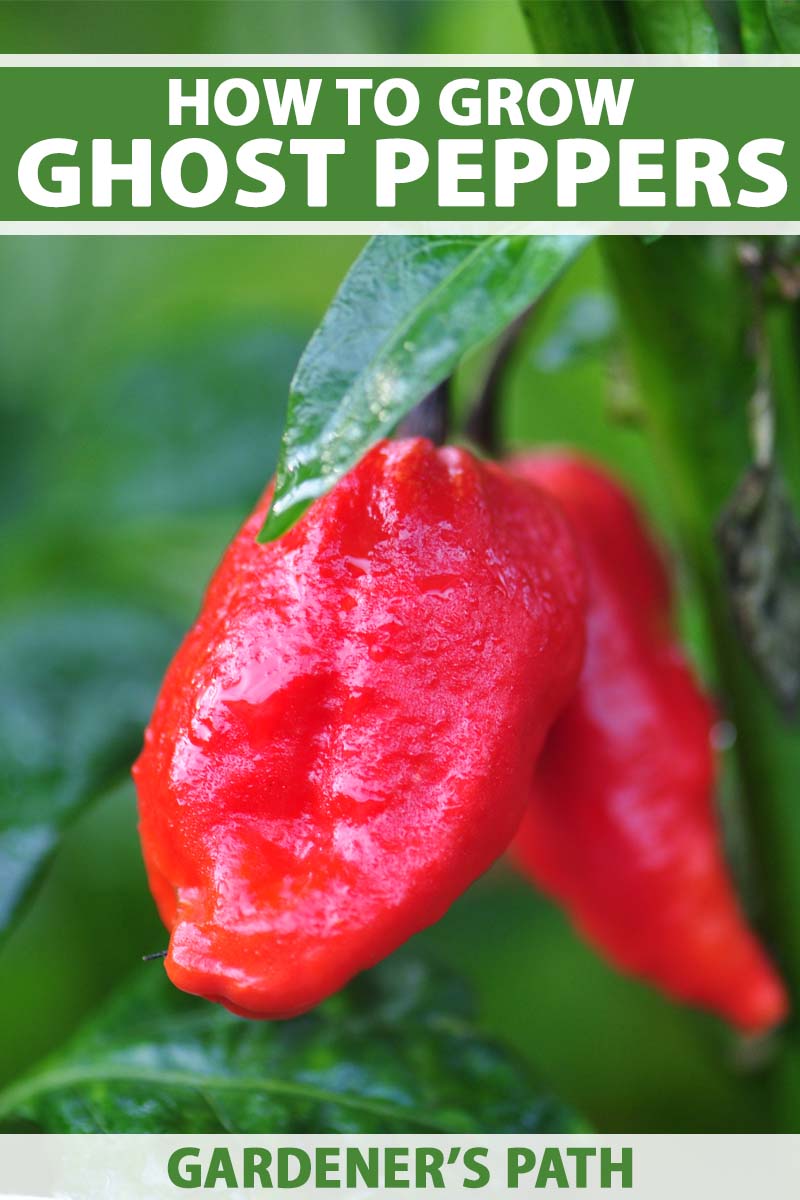
We link to vendors to help you find relevant products. If you buy from one of our links, we may earn a commission.
For comparison, the popular jalapeno pepper weighs in at between 2,500 SHU at the mild end, all the way to 8,000 SHU at its spiciest.
So at over a million SHU, what can we possibly do with ghost peppers, and why would anyone want to grow them?
Because they are delicious. In very small quantities.
What You’ll Learn
What Is a Ghost Pepper?
The ghost pepper, bhut jolokia, also known as naga jolokia or ghost chili, is a member of the nightshade family, Solanaceae, which includes eggplant, tomatoes, and of course, the bell pepper, Capsicum annuum – which has a Scoville rating of 0.
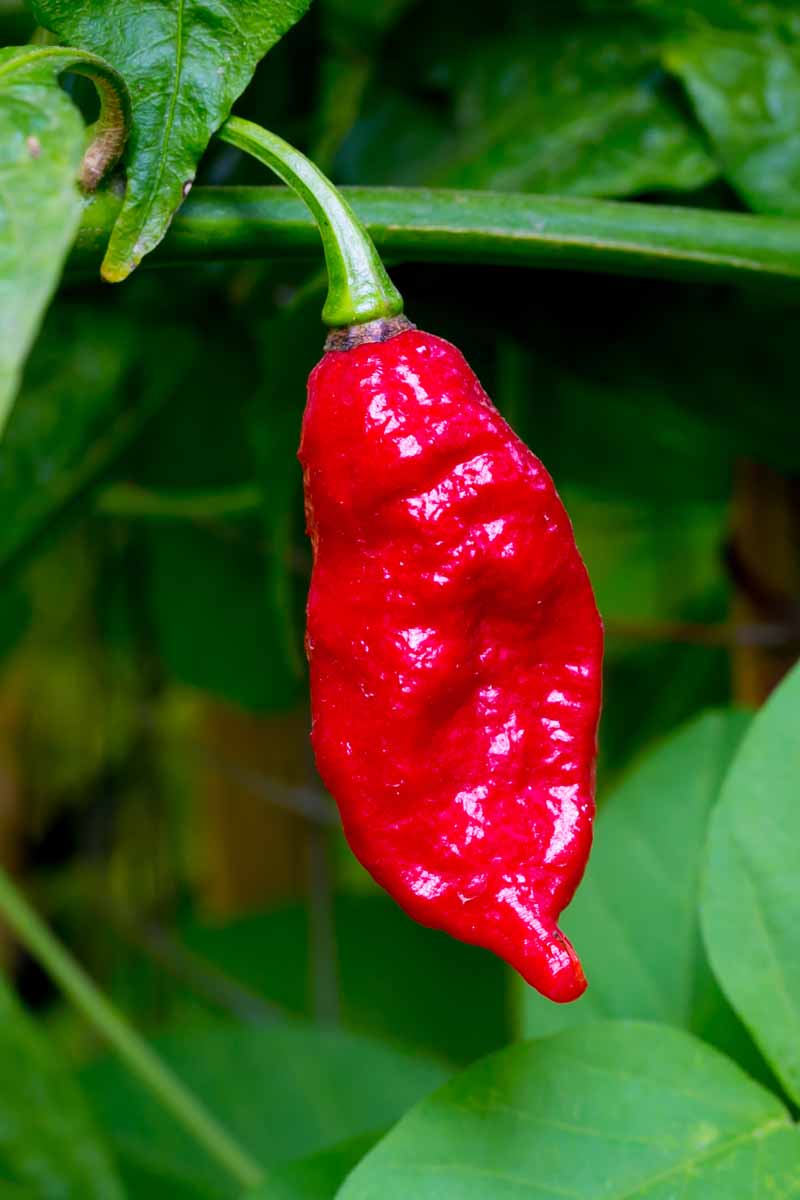
The Capsicum genus comprises over 200 species, and the ghost was thought to be an interspecific hybrid of C. chinense, a habanero type pepper, and C. frutescens.
Cultivated in northeast India, primarily in the Assam region, as of 2018, it has been reclassified as its own species, C. assamicum, on the basis of morphological studies.
Bhut jolokia is a tender perennial, often grown as an annual, suitable for gardeners in USDA Hardiness Zones 8-11.
Ripe peppers are usually red, two to three inches long and about an inch wide, with slightly wrinkled skin. They taper to a small point at the bottom of the pod.

In the right conditions, plants can reach a mature height of four feet, though mine have never managed more than two feet, but have never failed to provide me with an abundant harvest.
Apart from the mind-blowing heat, bhut jolokia has an almost sweet, smoky aftertaste. It’s not advisable to eat it raw.
It’s a good elephant deterrent. In parts of India, ground-up ghost peppers are smeared on fencing to keep crops safe from wild elephants. This is a tactic used in parts of Africa as well, to good effect. On that basis, it’s unlikely you’ll have a problem with deer!
You can refer to our hot pepper growing guide to learn more. Here I’m going to cover specific tips for cultivating ghost peppers in your garden.
When and How to Plant
Ghost peppers require a long growing season – up to 150 days from planting to harvest – so it’s best to start seeds indoors at least eight to 10 weeks before the average last frost date in your area.
Soak seeds in a little water overnight before sowing.
Sow 1/4 inch deep in trays filled with potting soil. You can use biodegradable pots to prevent damage to the roots when you transplant into the garden or to your container.
Cow Pots™ Biodegradable Seed Trays
You can use peat pots, but I really like Cow Pots™, as they are made from composted cow manure from a dairy farm in Vermont and will nourish your plants as they break down.
Find Cow Pots™ in a variety of sizes from Arbico Organics.
Seeds need an even soil temperature of 80-90°F in order to germinate.
To maintain this, you may need to use a heat mat, such as this one available at Burpee, or from Amazon.
Keep the soil evenly moist, but not waterlogged, and in 14-21 days your seeds should germinate.
Be patient, as it can sometimes take up to 35 days for sprouts to appear. If you are using a heat mat, you’ll need to be vigilant with your watering as the soil can dry out quickly.
After germination, move them to a sunny windowsill or place seedlings under grow lights.
Keep the grow lights two to three inches above the top of the sprouts. Continue to water regularly, keeping the soil moist – but be careful not to overwater.
Seedlings thrive in daytime temperatures above 70°F, and no less than 60°F at night.
Once your seedlings are four to six inches tall – about six to eight weeks after germination – it’s time to transplant them out into the garden, or into a container.
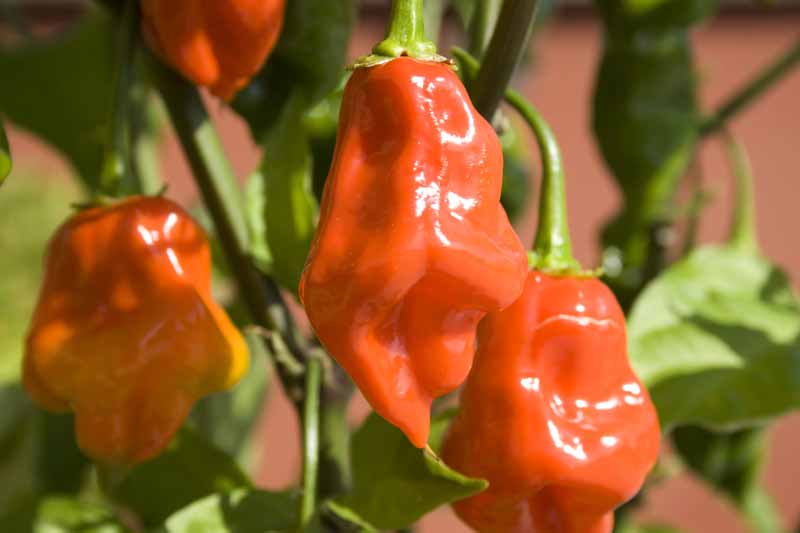
If you intend to grow them in containers, make sure your pot is at least eight inches deep and 11-12 inches wide.
Before planting out, you’ll need to harden off your seedlings.
To do this, decrease the daytime temperature to 60-65°F for one week before planting out.
Alternatively, place the plants in a sunny but sheltered area outdoors for a few hours each day, gradually increasing the amount of time they spend outside.
To get a jump on the growing season, you can purchase transplants from your local nursery and harden them off prior to planting out.
How to Grow
In their native environment, these peppers grow in hot, humid conditions.
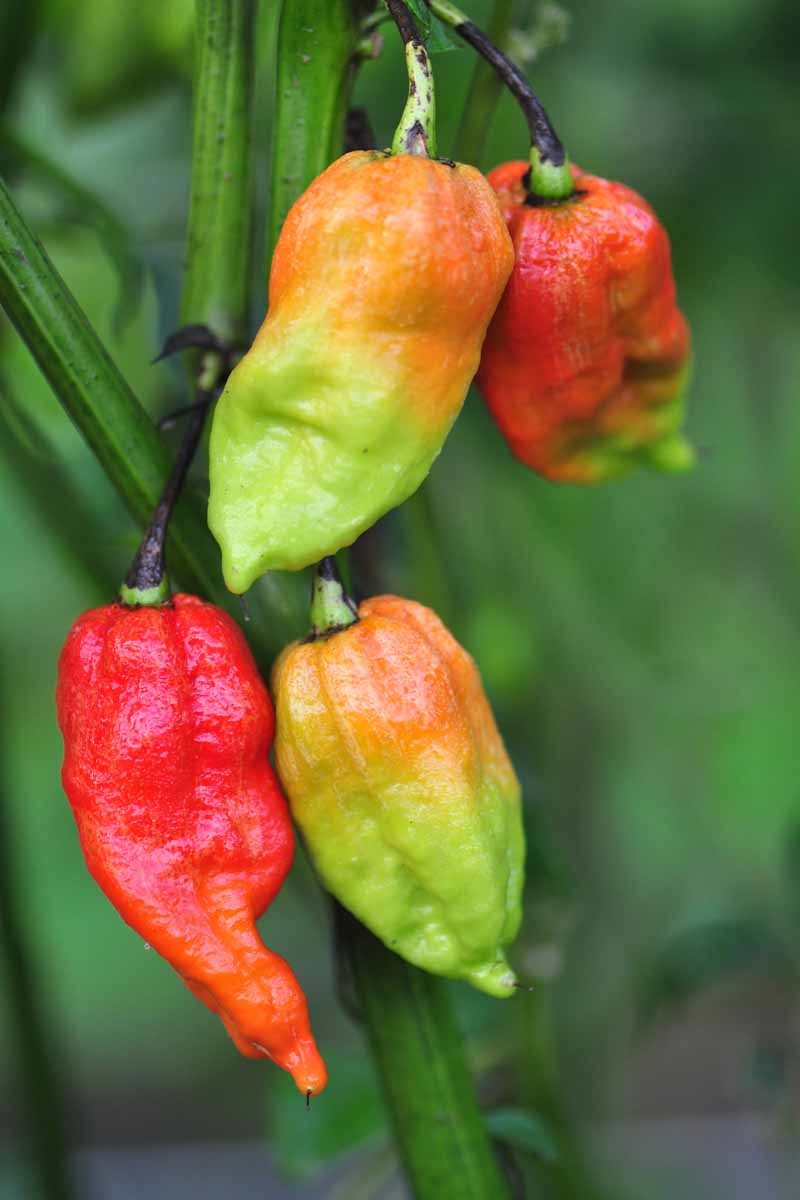
Ghost peppers require a full sun location, and well-drained, organically rich, fertile soil, with a pH of 6.0-6.8. You may wish to conduct a soil test to determine the pH and nutrient level of your soil and amend accordingly.
After all risk of frost has passed, and nighttime temperatures are above 60°F, you can plant your baby peppers.
Space plants 24-36 inches apart. Dig a hole the size of the root ball – or biodegradable pot, if using – and place the transplant into the hole, tamp down the soil, and water in well. Unlike tomatoes, peppers do not need their stems to be buried.
You can mulch with compost or straw to help prevent weeds and retain moisture, just make sure to keep the mulch at least an inch away from the stem to prevent rot.
You can use floating row covers to maintain an even temperature and protect young plants from wind and driving rain.
Ghost peppers require regular watering, about 1 inch per week, but they do not like wet feet. Check your soil, and if it’s dry to an inch deep, the plants need water. Be extra vigilant when flower buds form, and maintain even moisture.
Fertilize your plants regularly during the growing season, according to package instructions, with a 5-10-10 (NPK) fertilizer or tomato food. Avoid high nitrogen fertilizer as this can cause the plant to grow a lot of foliage and no fruit.
Tomato + Vegetable Granular Plant Food
You can find tomato food at your local garden center or from Burpee.
Bhut jolokia plants are very sensitive to temperature changes. The ideal temperature is between 70 and 90°F, and rapid changes can cause the plant to drop its flowers, or fail to thrive.
As they grow, you may need to stake your plants or use a tomato cage to prevent the stem from breaking in high winds, particularly when fruiting.
I like to pinch the growing tips to encourage a bushier plant, though this is not absolutely necessary.

Here in Zone 9b I grow my bhuts in containers on my deck. This way, I can ensure they get enough sunlight (six to eight hours per day) and they are protected from heavy rain and excessive wind.
Over the winter months, I prune them hard, and then they overwinter in my garage. I’ve had some success with a good crop from my second-year plants, but my third-year plants have not been very abundant this season.
Fruit will start out green and gradually turn red – or yellow, depending on the cultivar you are growing. They are ready to harvest when they have turned fully red, and the skin is slightly wrinkled.
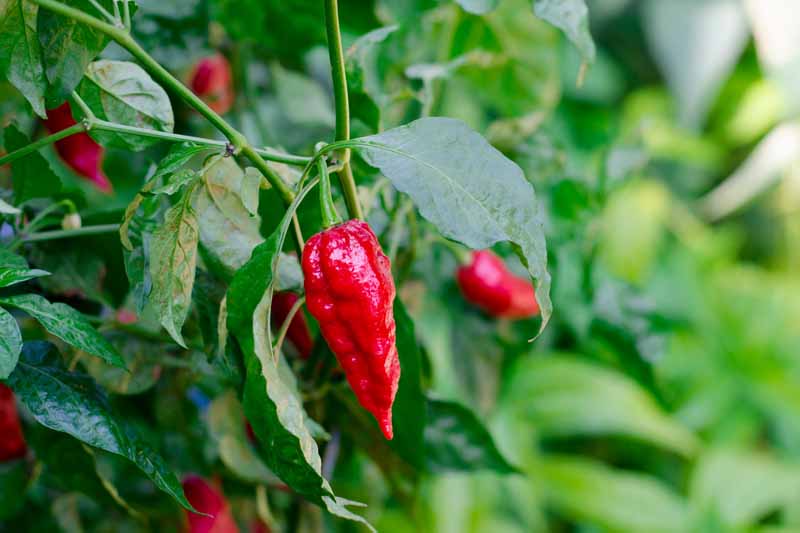
From the time I see the flowers start to appear, I feed my container plants every two weeks with tomato food and spray with an Epsom salt mixture on the alternate weeks.
The Epsom salt provides a source of magnesium to the plant, which helps to increase fruit yield.
To do this, I dissolve 2 tablespoons of Epsom salt into a spray bottle filled with warm water and use it as a foliar spray. Plants that are deficient in magnesium will produce lots of flowers but fail to set fruit.
Growing Tips
- Plant in a full sun location, with organically rich soil.
- Fertilize regularly with 5-10-10 (NPK) or tomato food.
- Keep soil moist but avoid overwatering.
Where to Buy
You can often find transplants available at your local garden center to get you started.
4” Ghost Pepper Plants via Bonnie Plants
Bonnie Plants offers 4-inch plants in 19-ounce pots, available at Home Depot.
Ghost Pepper Seeds via Eden Brothers
Or, if you want to try your luck with starting seeds, you can find packets in a variety of sizes available at Eden Brothers.
Managing Pests and Disease
Given that ghost peppers can be used to deter elephants, you’d be forgiven for thinking that they are untroubled by pests and disease. Unfortunately, that’s not always the case.
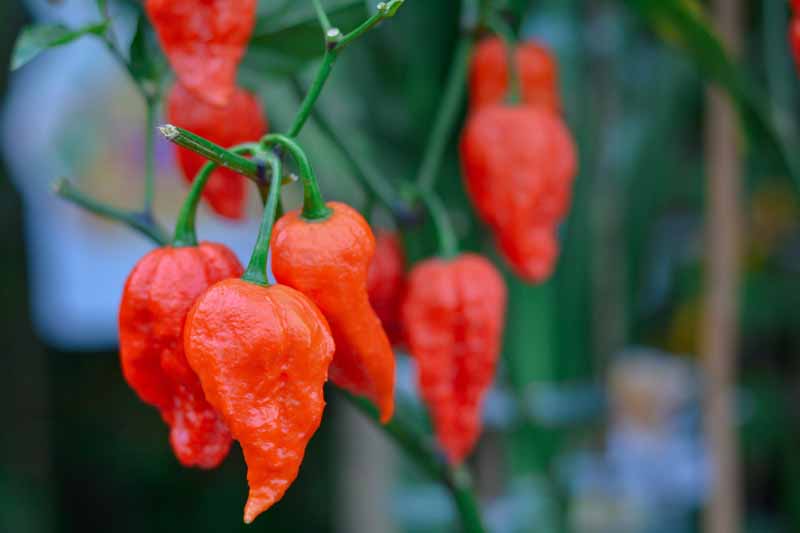
Aphids can enjoy feeding on your plants, but a strong blast from the hose can be enough to get rid of them. If they persist, then I recommend spraying with neem oil.
I do this once a week, making sure to target both the top and bottom of the foliage.
Check out this guide to learn more about managing aphids in your garden.
Spider mites, thrips, and flea beetles can also cause damage. Keep an eye out for these, and spray with neem oil, or apply diatomaceous earth. To deter slugs and snails, I use beer traps.
Read more about controlling pepper plant pests here.
Diseases that you might encounter include fungal leaf spot and powdery mildew, which can also be treated with neem oil or a targeted fungicide.
Bacterial leaf spot, caused by Xanthomonas campestris, is a serious disease that’s usually a result of planting infected transplants or seeds. Plants will need to be removed and destroyed.
Harvesting and Preserving
It’s been a long wait! About 120-150 days after starting your tiny plants, you will be rewarded with bright red peppers to liven up your garden and blow your head off.
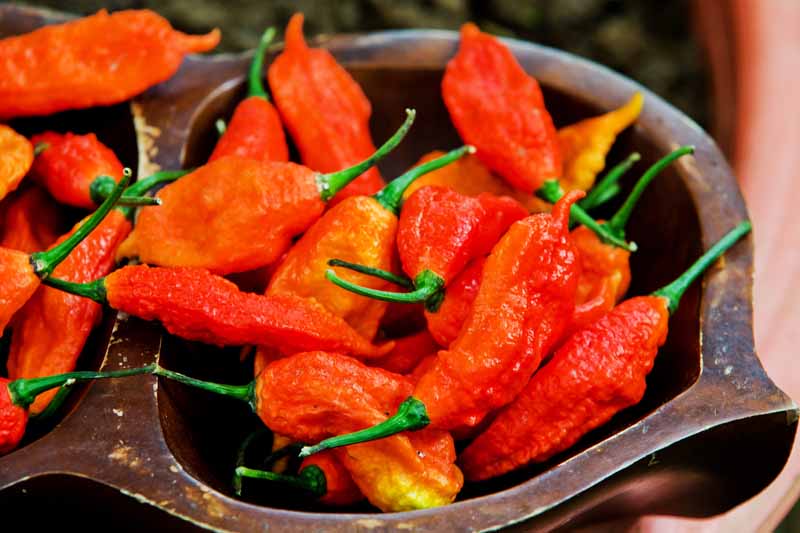
Harvesting is easy, just cut off the peppers as they ripen.
It’s recommended to wear gloves when you handle ghost peppers, and avoid contact with your skin – and definitely avoid touching your eyes or any other sensitive regions after handling.
Like other hot varieties, ghosts will last five to seven days in the refrigerator, after which time they can start to get mushy and possibly discolored.
I like to freeze my peppers. To do this, I simply place them in a plastic container or baggie and store them in the freezer – they’ll last for six months to a year.

You can also dry them. Using a dehydrator or a very low oven, spread them out whole, and keep an eye out for when they shrivel up. Store in a cool, dark, dry spot in an airtight container.
Recipes and Cooking Ideas
A little goes a very long way. Ghosts can be added to all your favorite recipes that call for hot peppers.
But be careful – even if you are used to throwing in habaneros by the handful, the ghost is up to 11 times hotter!

To prepare your ghost pepper, you’ll need to remember that the capsaicin will not just infuse your food with mind-blowing heat, but also your chopping board, and skin that comes into contact with it.
Wear gloves and eye protection when handling it – and wash your hands thoroughly before touching your eyes, mouth, or other sensitive areas. Remove and discard the seeds and inner membrane, and slice thinly.
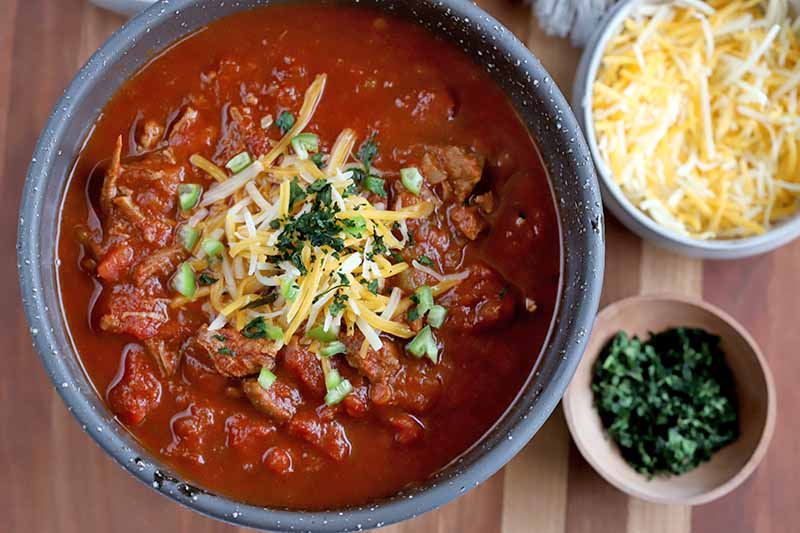
My recommendation is to start slowly, adding a very small amount at a time to your favorite chili or salsa recipes. I love this recipe for slow cooker game day chili, from our sister site, Foodal.
You can also make hot sauce, infused oil, or add it to your favorite salsa recipes – you can find some good ideas over at Foodal.
Remember that the flavor will develop over time. Your hot sauce will get spicier the longer you store it.
And please don’t forget to label your ghost peppers, and anything you make with them.
Quick Reference Growing Guide
| Plant Type: | Herbaceous tender perennial | Water Needs: | Moderate |
| Cultivated in: | Northeast India | Maintenance: | Moderate |
| Hardiness (USDA Zone): | 8-11 | Tolerance: | Drought |
| Season: | Summer | Soil Type: | Organically rich |
| Exposure: | Full sun | Soil pH: | 6.0-6.8 |
| Time to Maturity: | 120-150 days | Soil Drainage: | Well-draining |
| Spacing: | 2-3 feet | Companion Planting: | Basil, marigolds, peas |
| Planting Depth: | 1/4 inch (seeds) | Avoid Planting With: | Brassicas, fennel |
| Height: | 2-4 feet | Family: | Solanaceae |
| Spread: | 1-2 feet | Genus: | Capsicum |
| Pests & Diseases: | Aphids, flea beetles, pepper maggots, slugs and snails, spider mites, thrips, whitefly; anthracnose, leaf spot, Phytophthora blight, powdery mildew | Species:: | assamicum |
Respect the Ghost
I once added an entire ghost pepper to my beef chili. I mistook it for a habanero. That was a mistake I won’t be making again.
One bite and the heat was overwhelming. I ended up making a fresh batch of chili and mixing the two together. It was still one of the hottest dishes I’ve ever eaten.

In small quantities, the ghost gives a delicious depth of spiciness, but it needs respect.
Have you grown ghost peppers? Are you tempted to try? Let us know in the comments and share your favorite recipes!
If you want to learn more about growing peppers, you’ll need the following guides next:
- How to Grow Ornamental Peppers
- How to Plant and Grow Serrano Peppers
- How to Plant and Grow Poblano Peppers
Photos by Clare Groom and Meghan Yager © Ask the Experts, LLC. ALL RIGHTS RESERVED. See our TOS for more details. Product photos via Arbico Organics, Bonnie Plants, Burpee, and Eden Brothers. Uncredited photos: Shutterstock.
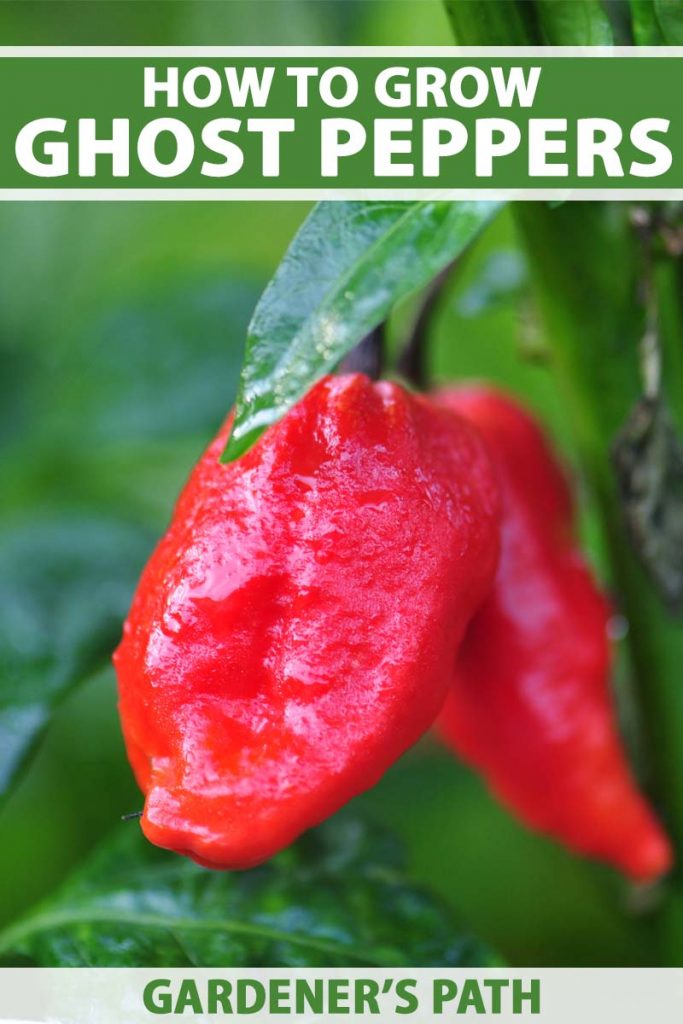

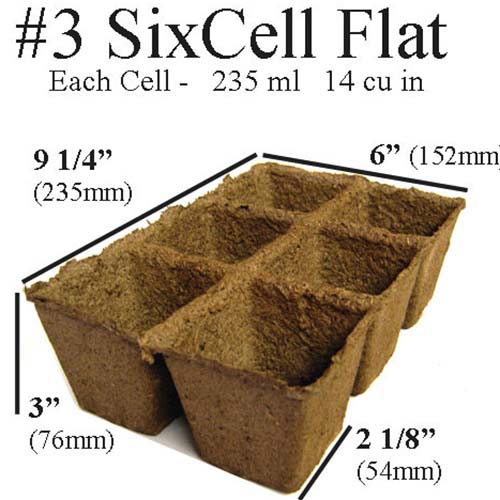
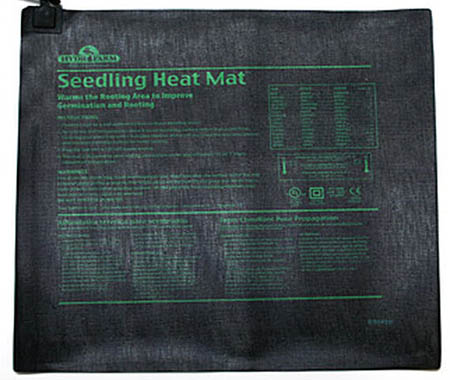
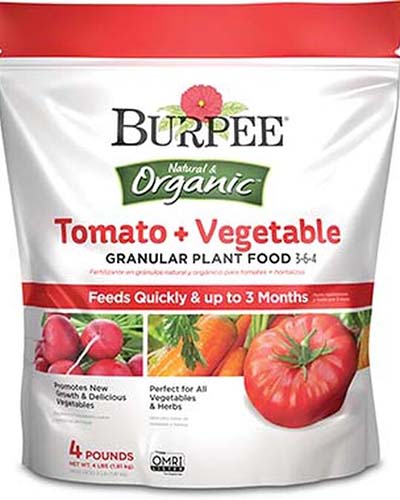

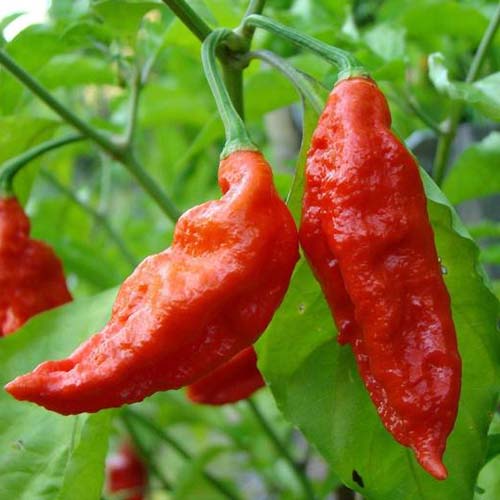
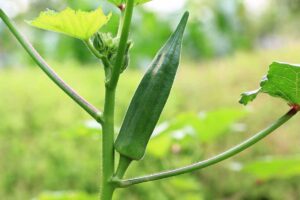
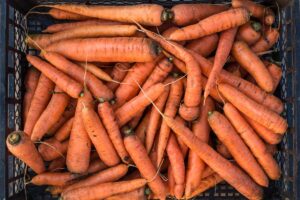
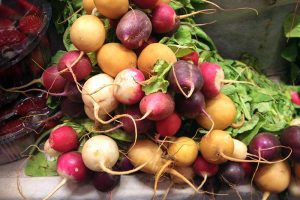
Loved your article, it was on point. I didn’t know hot sauce got hotter as it sits in the jar. Greatly appreciated. ????
Hi Anthony,
I’m so glad you enjoyed the article! Hot sauce.. the hotter the better, eh?
Great article, just started growing ghost plant for sauces. I’m excited the family is scared lol
Ghost peppers are great for sauces, and your family is right to be scared! Maybe you’ll manage to convince them to give it a try? 🙂
I grow a lot of super-hot peppers. I have numerous Bhut Jolokia varieties and crosses growing in pots here in Panama where I am retired. Panama has perfect weather for growing these sensitive pepper plants. I say sensitive because they need shade during the hottest part of the day and if it’s windy you also need to protect them from that as well. Easy to grow. Using these peppers is just a matter of getting used to the heat!! I make sauces with it and use it every day on the bland food they have here. I have varieties that… Read more »
Hi Glen,
I agree with you – once you get used to the heat, you only want more (hotter!) peppers. I’m very envious of your tall plants! Here in Zone 9b I overwinter mine in pots in the garage, or indoors with mixed results. Some plants seem to thrive the next season and others limp along not producing very much.
Happy gardening! And thank you for taking the time to comment.
Clare
used my first ghost peppers this week that I bought in a local (80 km away) grocery store… i made my annual batch of roasted garlic, roasted pepper (including 3 ghost peppers, 3 habaneros and 5 jalapeño peppers… are those now equal to bell peppers? the other ingredients (fresh peaches because they were going to go soft; dried mango and roasted red bell peppers)… I ended up calling it WTF sauce after a web thread i stupidly followed… I did save some seed from this afternoon’s experiment to use up parsley… (green apples, that you can grow in Saskatchewan (growing… Read more »
Hi Tom – WTF sauce, love it! That sounds delicious. With some grow lights you could try growing your ghosts indoors – let me know how it goes!
Hi. I’ve been growing my own ghost peppers and they’re just now starting to produce peppers. How long does it take for them to change color from light green to orange or red?
Hi Dan,
Congratulations on your ghosts – those are looking great! Ghost peppers are a bit slow to ripen and can take four to five weeks to change color. While you are waiting for the color to change be careful not to overwater. It’s a good idea to carefully prune any new flower buds that appear at this stage. In my experience, just when my patience is starting to run out, suddenly they turn from green to orange and in a day or two are completely red!
I have never grown any vegetables at home but we saw three varieties of peppers at our local nursery. We will be attempting to have ghost, Carolina reaper and black scorpion peppers. Our salsa shall light up anyone’s palate for sure!!
Great article. I grew some ghosts when we lived in Oakville, and just came across some seeds so was refreshing the knowledge. We dry smoked some as well and they turned out fabulous. The flavour is incredible from these peppers, but be careful how much you use.
Don’t you just love the ghosts? But you’re quite right, be very careful how much you use! Also, be careful and don’t do what I did and fill a dehydrator full of ghosts and run it in the house. The capsacin was literally eye-watering! If you like ghost peppers, you might also like to try ‘Devil’s Tongue,’ very aromatic, but with a kick that would make most mules jealous. Good luck with your ghosts, let me know how they go!
Good to know, my plan was to start dehydrating some hot peppers if I’m able to get a large enough harvest. Don’t want to bomb the house lol. I actually did that with some dehydrated reapers I bought. I decided to turn them into pepper flakes and I filled my food processor canister with them. Probably had close to 60 peppers in there. When I hit the go button it was like a pepper bomb when off. It sent both me and my wife coughing and gagging with burning Lungs running out of the house lol. I put an N95… Read more »
Woahhhh – after learning the hard way, I have set my dehydrator in a garden shed. But I also made the mistake of making hot pepper powder from some freshly dried reapers. Let’s just say that the coffee grinder I used is not suitable for coffee beans any more, and as you found, the house was somewhat uninhabitable for a few hours! We only make these mistakes once (hopefully!)
Lol yeah no kidding. It’s amazing the power of the super hot peppers, personally I’ve never had much problems with them burning my fingers I can chop them without any gloves no problem, the skin on my hands and finger tips is very tough. But the eyes and lungs that’s another story. I’m kind of afraid to try doing any sautéing with anything hotter than a habanero I don’t want to need a hazmat suit and ventilator in the kitchen lol.
Sauteing super hots is a very good way of making your house uninhabitable! lol
Hey good info , I’ve grown ghost a couple of times always used seedlings ( Im in the Toronto area of Canada) a challenge with a short season but have gotten a couple of ok harvest which is ok because I’m the only one that uses them an I usually dehydrate , then custom blend then with other hot variety’s for good a flavor . tried to start some of my own seeds until now didn’t know it took so long so mine might still be coming lol but got a seedling since I thought they were not gonna go… Read more »
Hi Ron, yes the growing season for these super hots is definitely a long one! What I recommend, and do myself, is to start seeds as early as you possibly can, as early as November or December. I use a heat mat and a grow light to maintain the temperature and light that the seedlings require, and then harden them off after all risk of frost has passed. Then either plant them out or keep them in containers. You can also overwinter your ghosts, I’ve had good success with these and other varieties. The advantage of overwintering is that you… Read more »
I’m in zone 8 in Sierra Nevada foothills at an elevation of 2550 ft. on fully exposed mountain top. In spring of 2013, I planted my carefully germinated seedling and did harden it off , but knew NOTHING at the time about all of your wonderful growing tips and instructions for a vibrant outcome. You may not believe this…my fully matured plant had a main trunk diameter of 1.25 inches and over 4 feet in height. The yeild was medium and really varied sizing of pods. They were a minimum of 1/2 inch to maximum of 3 1/2 inches. Just… Read more »
Hi Victor,
I’m always happy to hear from people who grow their superhots as perennials! So many folk just keep them as annuals and toss them at the end of the season. I’m a bit fan of overwintering hot peppers – it gives you a huge jumpstart at the beginning of the next season. This past season my three-year-old habanero grew to about three feet tall – it was in a container, so probably could have gotten bigger if it had been in the ground.
Good luck with your new start! Let me know how it goes!
This is my first year growing Ghosts and I’m growing from seed. Thanks for the tips! I’m working on a large planter box to keep my peppers separate from my wife’s other veggies ????. I had some luck a few years ago when I adopted 3 half-dead Reaper seedlings from a friend who started growing them in his hydro setup and then remembered that he has no heat tolerance (i.e jalapeños are murder to him). I lost one plant, gave another to my boss, who is also a big pepper head and managed to wake up the third for a… Read more »
Hi Jason, good luck with your baby ghosts! A large planter box sounds perfect for them. I don’t understand people who find jalapenos too hot, I mean, those are easily confused with sweet bell peppers aren’t they? Ghosts and reapers are pretty hardcore though!
My ghost pepper plants are really bushy, espe6close to the ground. Do I need to prune them at all?
Hi Carmen, during the growing season, I don’t typically prune my plants. That said, if the plants are fairly large, you could take off a couple of the lower branches if they’re too close to the ground. The problem with them touching the ground is that they may pick up fungal diseases from the soil. Can you possibly upload a photo so I could have a look and advise you further?